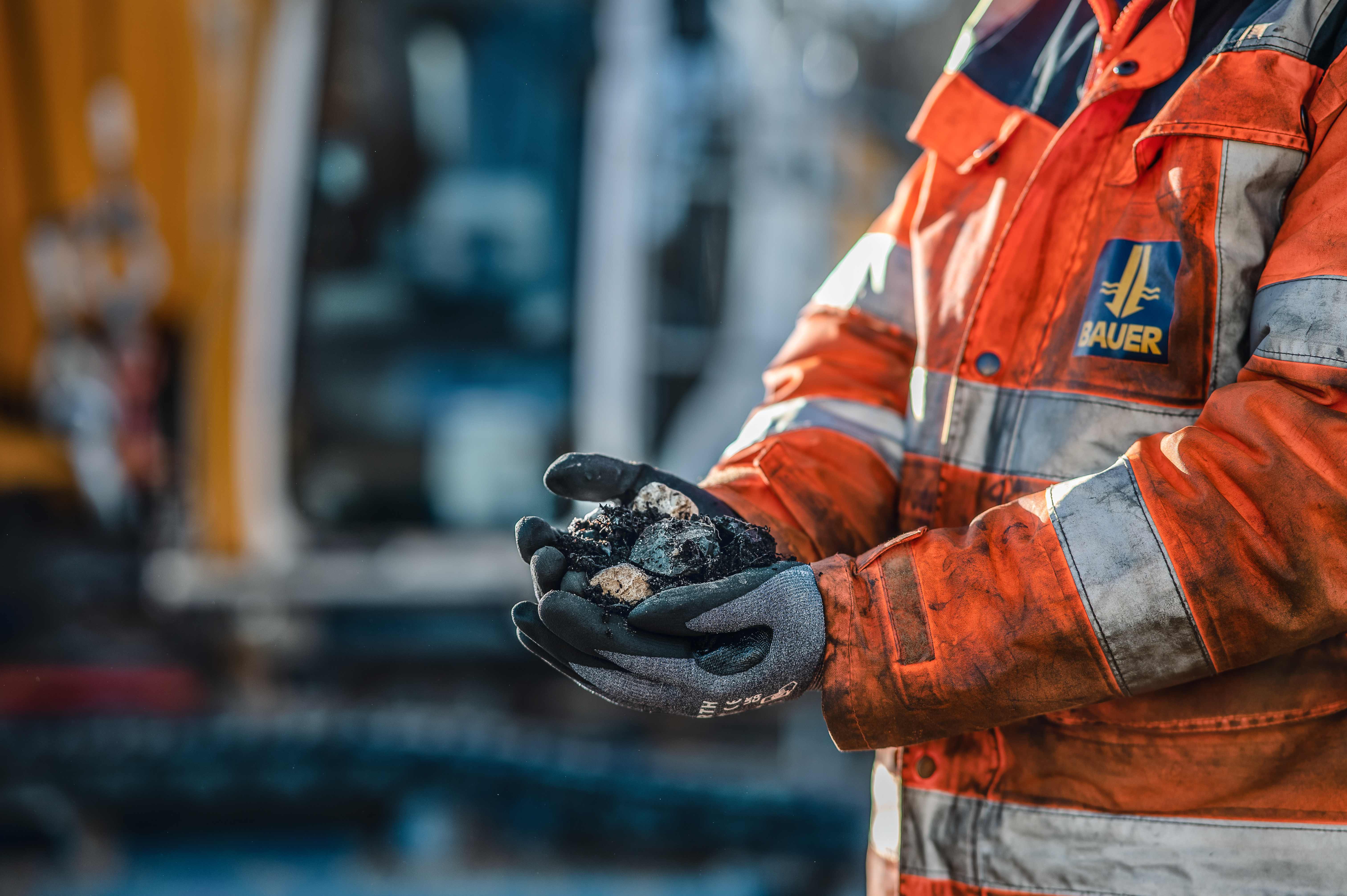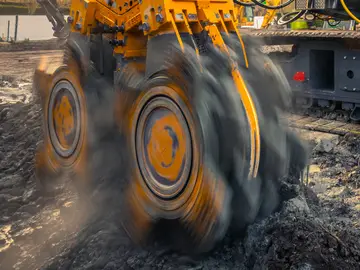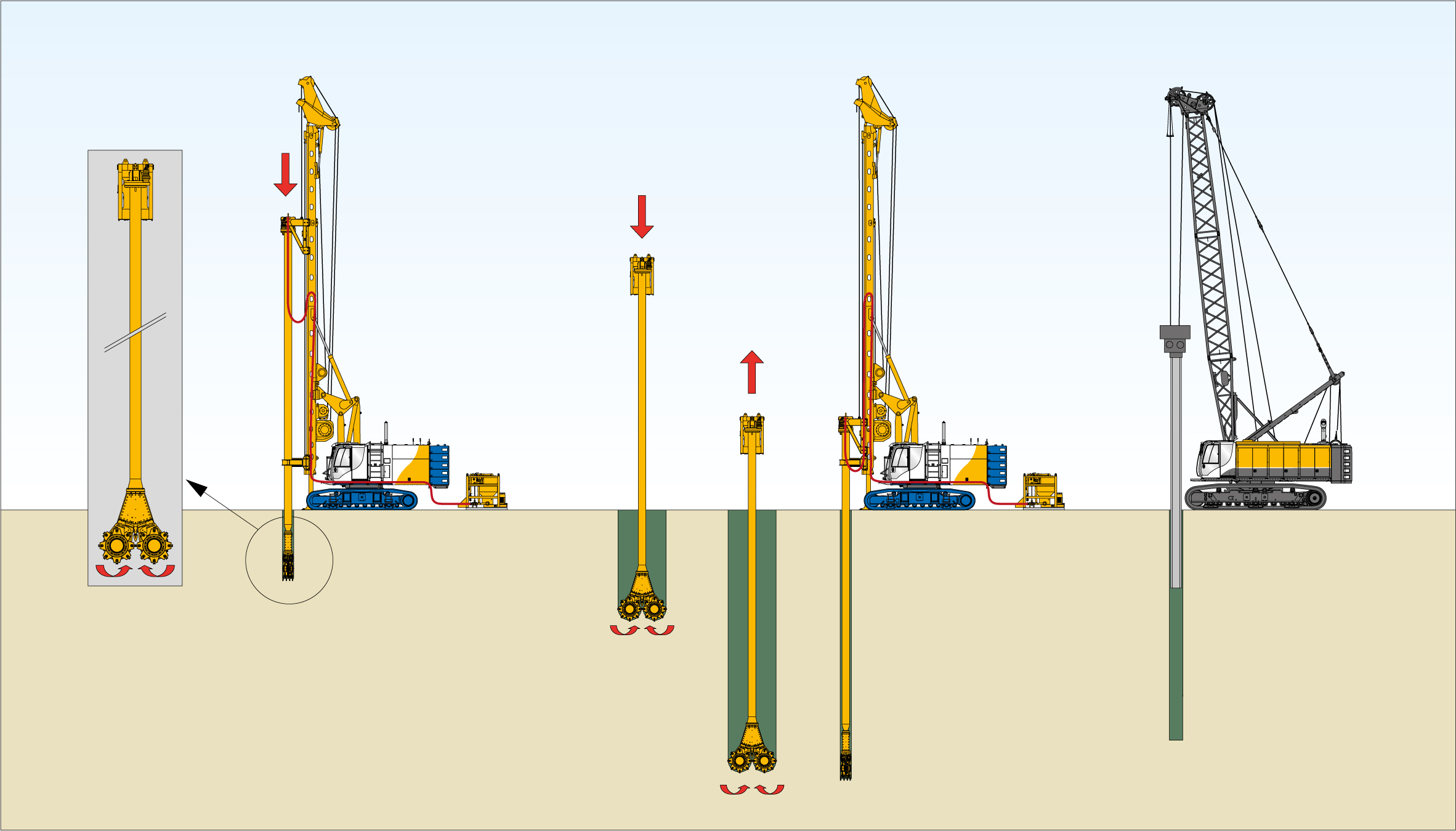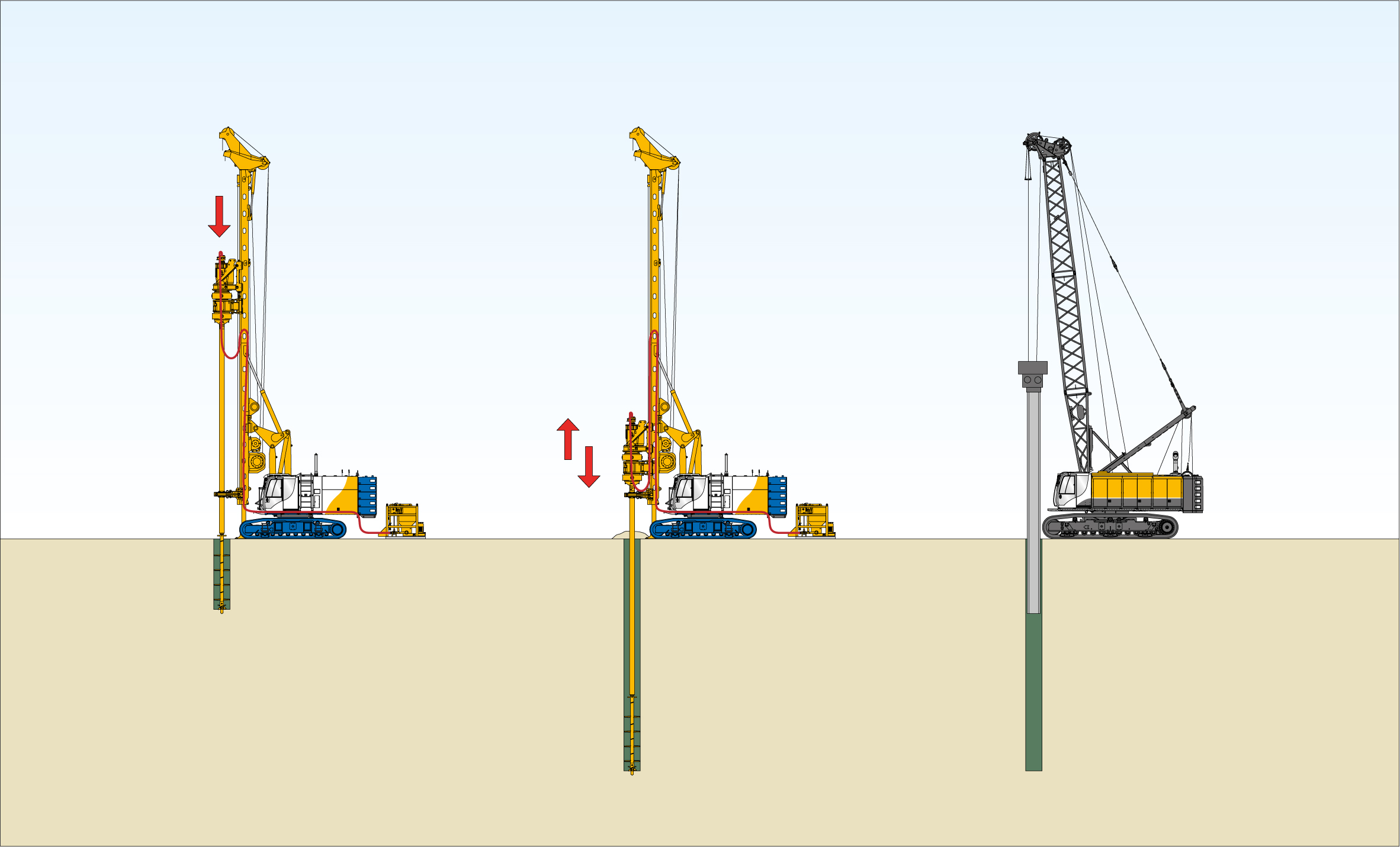Soil mixing methods
Different soil mixing methods are used for the construction of cut-off walls, foundation elements and soil improvement. Yet the advantages of in-situ methods are universal:
- Embedded soil is used as a construction material, which considerably reduces the quantity of excavated material that needs to be removed.
- Because the self-hardening slurry to be introduced can be mixed on site as needed, no delivery of fresh concrete is required.
- Mixing the soil with the self-hardening slurry generates no vibrations – this is good for sensitive structures in the immediate vicinity of the site.
Cutter Soil Mixing (CSM)
Cutter Soil Mixing (CSM) is derived from the trench cutting method (a guide wall is not required). Cutting wheels loosen the soil and mix it with a slurry to form a homogeneous soil-bentonite mortar. The method can be used to construct cut-off walls and retaining structures in various soil types, including hard soils.
Single column mixing (SCM)
For Single Column Mixing (SCM), the single mixer – a mixing paddle with starter auger – is inserted into the soil. This mixes the embedded soil with a binding agent that is injected at the same time as insertion. The binding agent can be prepared on the mixing tool in dry or slurry form. The method is principally used in loose, non-cohesive soils as a soil improvement measure.
Single column mixing for double-head drilling systems (SCM-DH)
As an enhancement of single column mixing, with the SCM-DH method (DH stands for double head) a double-head drive turns two mixing tool components in reverse direction of rotation. This achieves a particularly intensive mixing of the soil with the slurry. The method is especially suited for the construction of soil mixing columns with larger diameters and in cohesive as well as sandy soils.
Downloads
Any Questions?
I look forward to receiving your message or your call.

You might also be interested in:

Are you looking for a powerful and reliable drilling rig? Discover the advantages of our BG series now and take it for a spin!

Whether drilling, impact driving, cutting, mixing or vibrating, the variety of specialist foundation engineering methods is impressive. An overview of the most common methods.

High-quality spare parts and competent service: You can count on the professionals in our Parts & Service division.

We train equipment operators, mechanics and service personnel for specialist foundation engineering. Discover our seminars & online trainings now!



